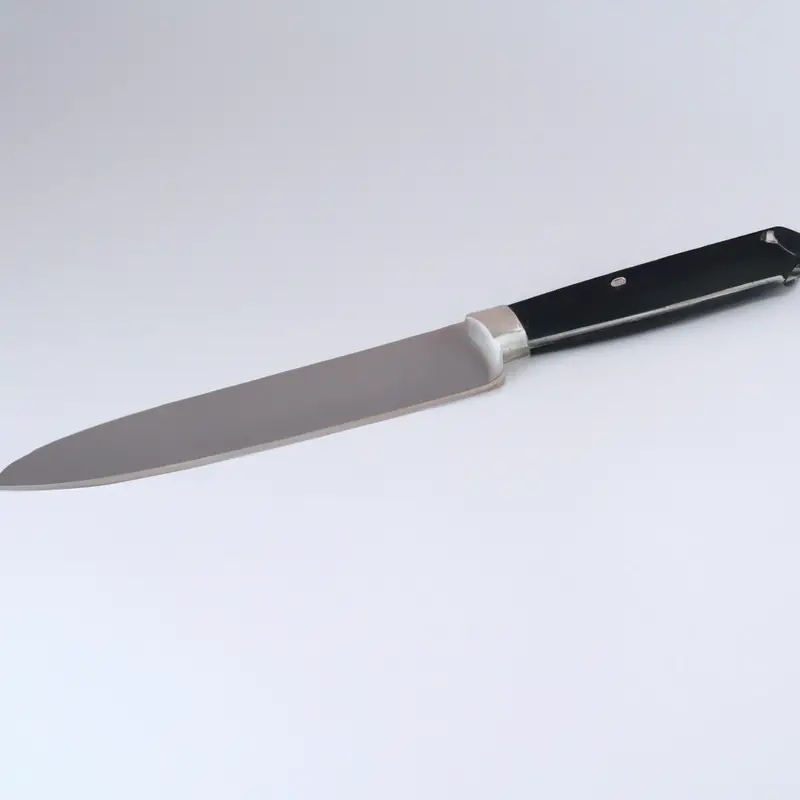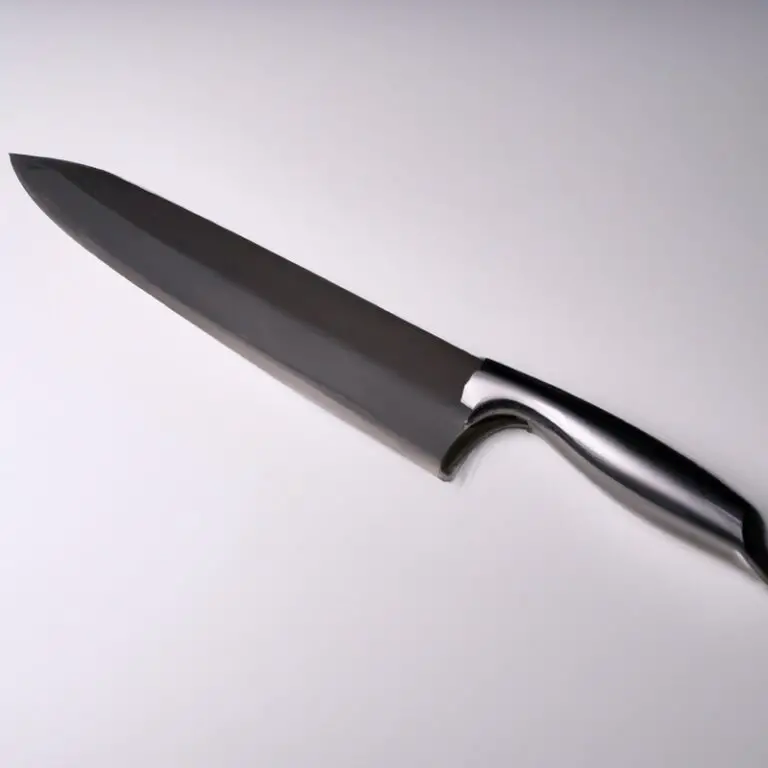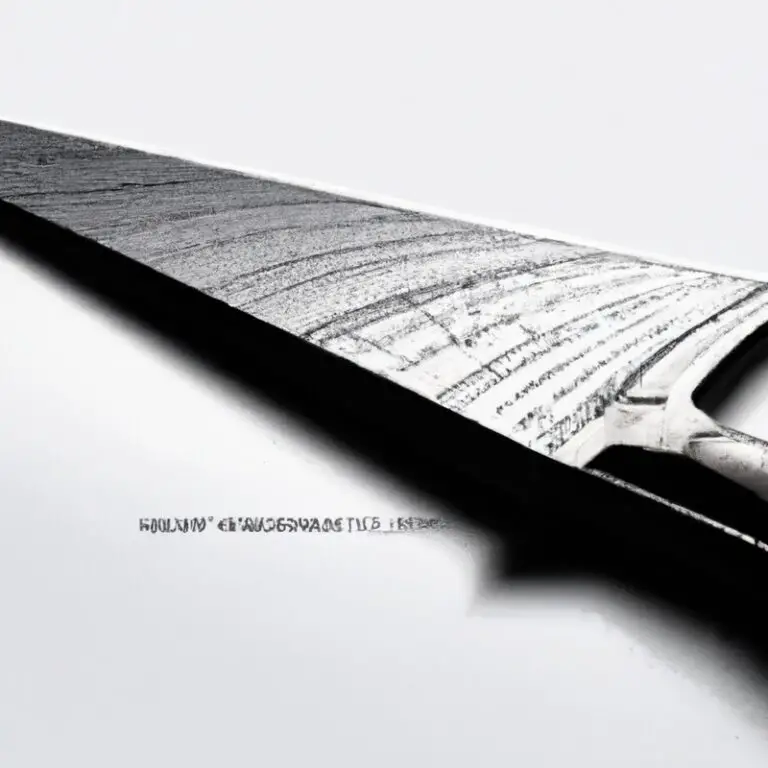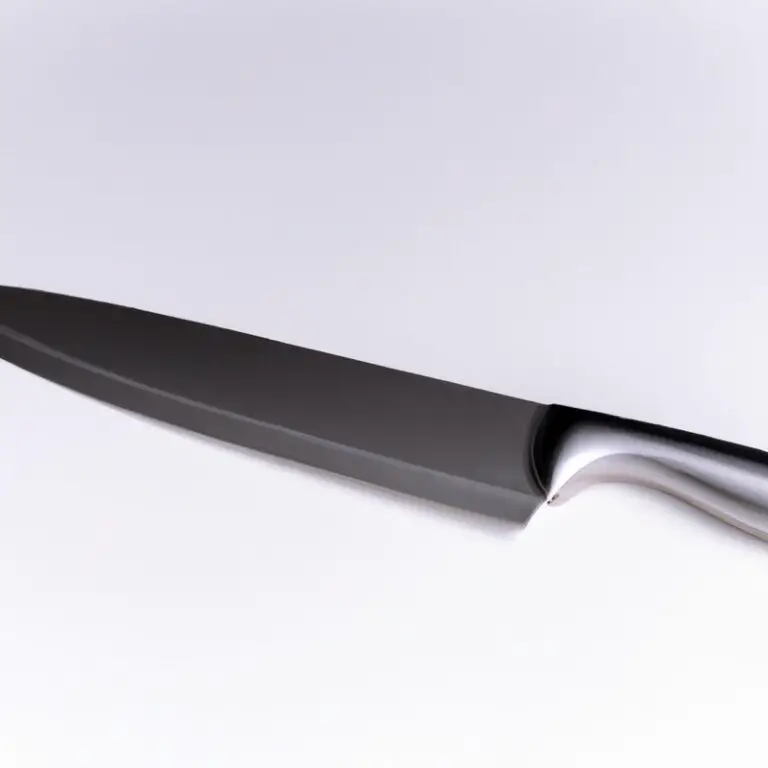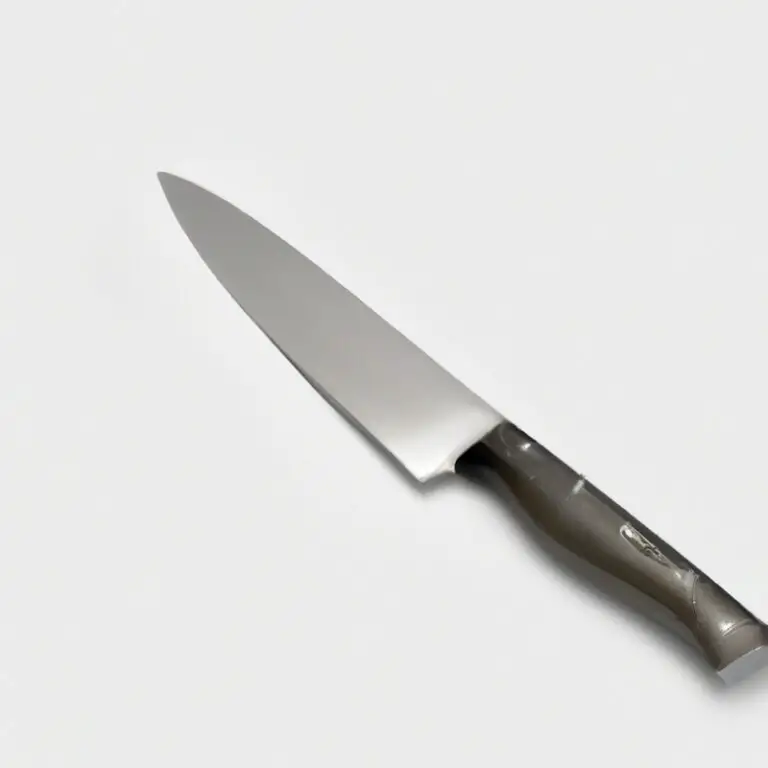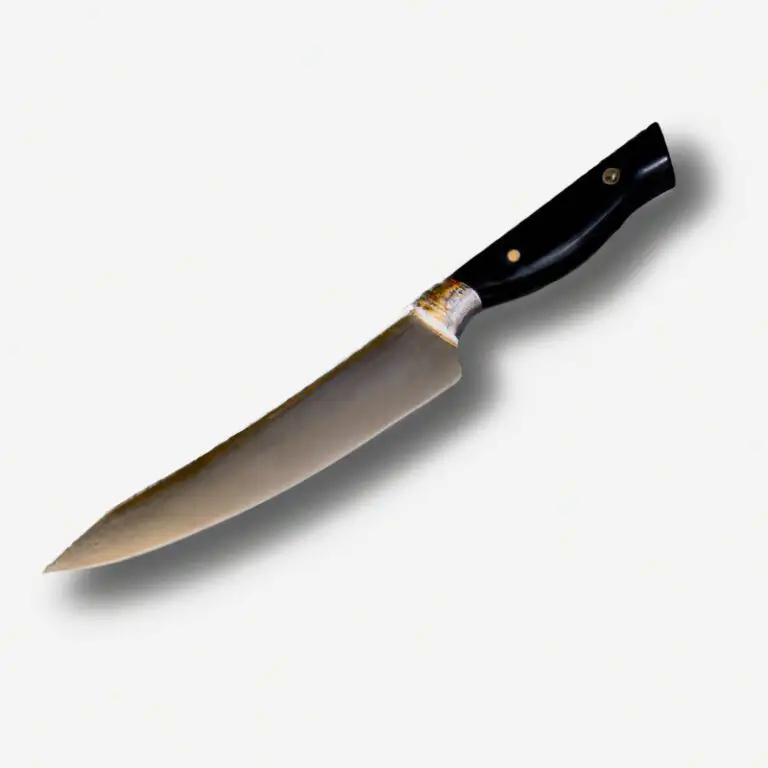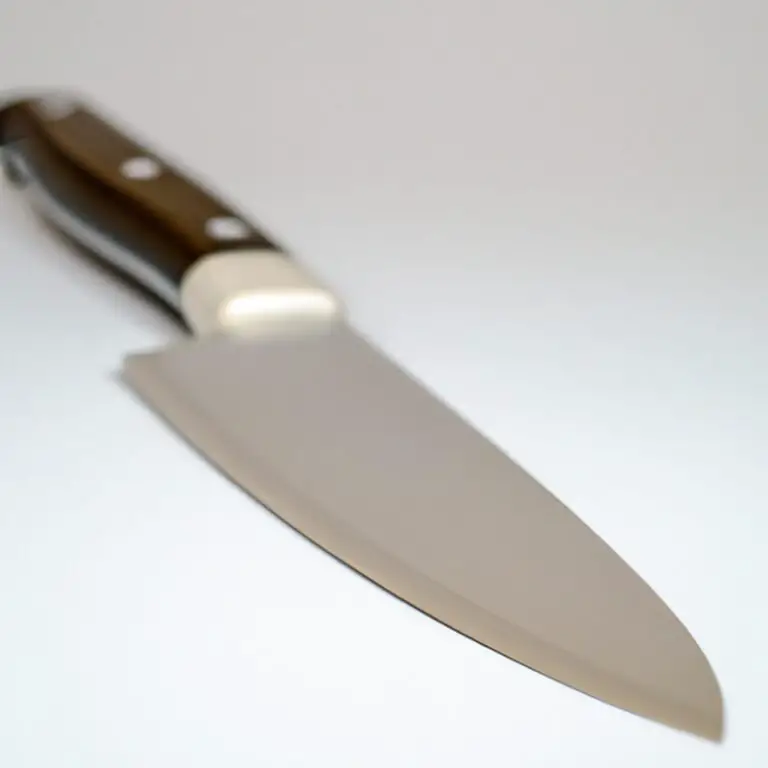What Are The Different Types Of Chef Knives?
Key Takeaways:
- Chef knives come in various shapes and sizes, including the versatile and all-purpose chef’s knife, the precision-oriented Santoku Knife, and the heavy-duty cleaver.
- Choosing the right type of chef knife depends on the intended use, with different styles of knives suited for different tasks such as chopping, dicing, or filleting.
- A high-quality chef knife is an essential tool for any culinary professional or home cook, and investment in a durable and reliable blade can greatly enhance one’s cooking experience.
- Whether you’re a seasoned chef or just starting in the kitchen, understanding the different types of chef knives and their uses can help you achieve precision, efficiency, and artistry in your culinary creations.
Do you ever get overwhelmed with the variety of chef knives available in the market? Choosing the right type of knife can make a significant difference in your cooking experience and the outcome of your culinary masterpiece.
From the classic chef knife to the specialized tomato knife, every knife serves a unique purpose in the kitchen.
In this article, I’ll give you a comprehensive guide to understanding the anatomy of various chef knives, and help you choose the perfect one for your kitchen. Let’s dive into the world of chef knives!
| Type of Chef Knife | Description |
|---|---|
| Chef’s Knife | A versatile knife, typically 8-10 inches long, used for chopping, slicing, and dicing a variety of foods. |
| Santoku Knife | A Japanese-style knife, typically 5-7 inches long, used for slicing, dicing, and mincing vegetables, fish, and meat. |
| Bread Knife | A serrated knife, typically 8-9 inches long, used for slicing bread without squishing it. |
| Boning Knife | A knife with a narrow, flexible blade, typically 5-6 inches long, used for removing bones from meat and poultry. |
| Paring Knife | A small knife, typically 3-4 inches long, used for peeling and trimming fruits and vegetables or other delicate tasks. |
| Cleaver | A large, heavy knife, with a broad and thick blade, used for chopping and cutting through bones. |
Understanding the Anatomy of Chef Knives: A Basic Guide
Understanding the Anatomy of Chef Knives: A Basic Guide Every chef knife consists of three main parts: the blade, handle, and tang. The blade is the primary cutting edge, and its shape can vary between a curved or straight edge.
The handle provides grip and control, while the tang is the unsharpened portion of the blade that extends into the handle.
Different blade shapes are designed for specific tasks. For example, a chef knife’s wider blade is perfect for cutting through vegetables, fruits, and meats.
Santoku knives have a flatter edge, making them ideal for precision cuts on vegetables, fish, and meat.
When it comes to the blade material, high-carbon stainless steel is the most popular choice for its superior sharpness and durability. Other factors to consider include weight, balance, and size, as these can impact the knife’s performance and comfort when in use.
Understanding the anatomy of chef knives is necessary to choose the right one for your kitchen.
By doing so, you can be sure of a safe and effortless cooking experience.
The Classic Chef Knife: What Makes It an Essential Tool in Every Kitchen?
The classic chef knife is an essential tool in every kitchen due to its versatility and durability. Its length ranges from 6 to 12 inches, and it features a triangular-shaped blade that tapers at the tip.
This design provides a sharp point to pierce food items and a broad base for chopping and slicing.
The knife’s curved edge enables rocking the blade back and forth on the cutting surface, ensuring a smooth and precise cutting motion. The classic chef knife can cut through a vast range of ingredients, including meats, vegetables, and fruits.
It also serves as an all-purpose tool for dicing, mincing, and slicing.
Therefore, if you are looking to invest in a chef knife that can handle an array of kitchen tasks, consider getting a classic chef knife.
The Multi-Purpose Santoku Knife: Why Should You Add It to Your Collection?
The Santoku knife is a versatile Japanese chef’s knife that has gained popularity in recent years. Its flat edge and shorter length make it an excellent tool for slicing, dicing, and chopping vegetables, meat, and fish.
Its unique Granton edge also prevents food from sticking to the blade, making it a perfect choice for faster and more efficient cutting.
Moreover, the Santoku knife has a comfortable handle that allows for comfortable grip and easy maneuvering, reducing the risk of accidents while cooking. It is highly durable, easy to maintain, and can be used for various kitchen tasks, making it a must-have for any aspiring home cook or professional chef.
Whether you’re a seasoned professional or just starting in the kitchen, the Santoku knife is an excellent investment that can enhance your cooking skills and make your tasks more comfortable and efficient.
It is an essential tool that can help you save time, money, and effort in the kitchen while producing great results, making it an ideal addition to your collection of kitchen knives.
Serrated Knives: Perfect for Cutting Through Tough Foods
Serrated knives have teeth-like ridges on their edges, making them perfect for cutting through tough foods like bread, tomatoes, and other fruits. They grip the surface of the food, enabling the user to make clean slices without squishing or crushing the interior.
Serrated knives also require less sharpening than straight-edged knives.
When selecting a serrated knife, consider the length and density of the teeth, as well as the overall size of the knife. A longer blade is ideal for cutting larger loaves of bread, while a shorter one is perfect for smaller fruits and vegetables.
Having a serrated knife in your chef knife collection can make slicing through tough foods a breeze.
The Cleaver: More Than Just a Meat Chopper
The Cleaver is often thought of as a tool for breaking down large cuts of meat, but it has a wide range of uses beyond that. This heavy-duty knife is incredibly versatile and can handle everything from chopping vegetables and fruits to crushing garlic and ginger.
The broad blade allows for excellent control and precision, making it a favorite among many professional chefs.
Plus, the flat surface of the blade can be used to transfer food from the cutting board to the skillet or pot, making it a multitasking tool in the kitchen. If you’re looking for a knife that can do it all, the Cleaver is definitely worth considering.
The Bread Knife: The Secret to Effortlessly Slicing through Loaves
A bread knife is a serrated kitchen knife used primarily for slicing bread. Its serrated edges allow the knife to cut cleanly through bread without crushing it, making it the perfect tool for slicing through crusty loaves and soft bread with ease.
The length of the blade usually ranges from 7 to 12 inches, and the serrations commonly come in different patterns to cater to different types of bread.
For instance, the serrations on a bread knife meant for slicing hard, crusty loaves like a baguette will have less space between them and be sharper than the ones meant for softer bread. Investing in a good quality bread knife will make your life easier by allowing you to slice bread with precision and ease, ensuring evenly sliced pieces for every use.
Paring Knives: Why Every Cook Needs One
Paring knives are small, sharp, and versatile knives that every cook needs in their kitchen. They have narrow blades that make them perfect for peeling, trimming, and slicing small fruits and vegetables.
Paring knives can be used for delicate tasks where larger knives would be cumbersome, making them an essential tool for any cook.
They can also be used for garnishing, sculpting, and creating intricate designs in vegetables and fruits. Paring knives are also great for cutting cheese, deveining shrimp, and scoring meat.
They are perfect for tasks that require precision, and their compact size allows for more control and accuracy than larger knives.
Investing in a high-quality paring knife is essential for any home cook or professional chef. Look for a knife with a durable and comfortable handle and a sharp, thin blade that can hold its edge.
A good paring knife should be easy to maneuver and offer a comfortable grip.
Paring knives are an indispensable tool for every cook, and they offer excellent value for money. With their versatility, ease of use, and precision, they should be an essential part of every kitchen.
The Boning Knife: Perfect for Trimming Meat and Poultry
The Boning Knife is a specialized blade designed for trimming meat and poultry. Its slim, sharp, and flexible blade allows for precise cuts, making it perfect for removing bones or trimming excess fat from meat.
The knife’s pointed tip and narrow blade help to navigate around bones and through tight spaces with ease, allowing the chef to create clean and professional-looking cuts.
Boning knives come in two varieties, stiff and flexible. A stiff blade is ideal for cutting through thick sections of meat and dense bones, whereas a flexible blade is better suited for more delicate cuts like fish and poultry.
The knife’s handle should provide a comfortable and secure grip while providing adequate control and balance.
A Boning Knife is an essential tool for any chef who prepares meat regularly. It ensures precise cuts that enhance the presentation of the meat and significantly reduces cutting time, making it an indispensable tool in any kitchen.
Utility Knives: The Swiss Army Knife of Chef Knives
Utility knives are versatile, multi-purpose knives that every chef should have in their toolkit. They are often called the “Swiss Army Knife” of chef knives because of their ability to handle different tasks with ease.
Utility knives typically have a blade length of 4 to 7 inches, making them smaller than a classic chef’s knife.
However, they are still large enough to handle most cutting jobs, from slicing fruits and vegetables to trimming meat and poultry. Utility knives often have a curved blade, which makes them ideal for slicing through foods with a sawing motion.
They can also have a straight blade, which is better suited for chopping and mincing.
Some utility knives even have a serrated edge, which can be useful for cutting through tougher foods like bread or tomatoes. When choosing a utility knife, look for one with a comfortable handle that provides a good grip.
The blade should be sharp and made from high-quality materials like stainless steel or carbon steel.
Some utility knives also come with a granton edge, which helps prevent food from sticking to the blade as you cut. Overall, utility knives are an excellent addition to any chef’s knife collection.
Their versatility and compact size make them a go-to tool for a variety of cutting tasks in the kitchen.
Carving Knives: Impress Your Guests with Perfectly Carved Roasts
Carving Knives: Impress Your Guests with Perfectly Carved Roasts A carving knife is designed to cut meat such as turkey, ham, or roast beef into thin, even slices. Its long, thin blade helps to guide the knife through the meat while maintaining the texture and flavor.
When selecting a carving knife, it is essential to consider its handle for a comfortable grip and its blade length.
A blade length of 8-12 inches is suitable for most roasts, but larger blades may be necessary for more significant cuts of meat. To carve a roast properly, it is vital to let it rest for 10-15 minutes before slicing, allowing the juices to redistribute.
Use a carving fork and a carving knife to hold the meat firmly and slice against the grain to ensure tender slices.
Investing in a quality carving knife is essential for making a good impression while entertaining guests. A well-carved roast can instantly elevate a meal and is a testament to the cook’s cooking skills.
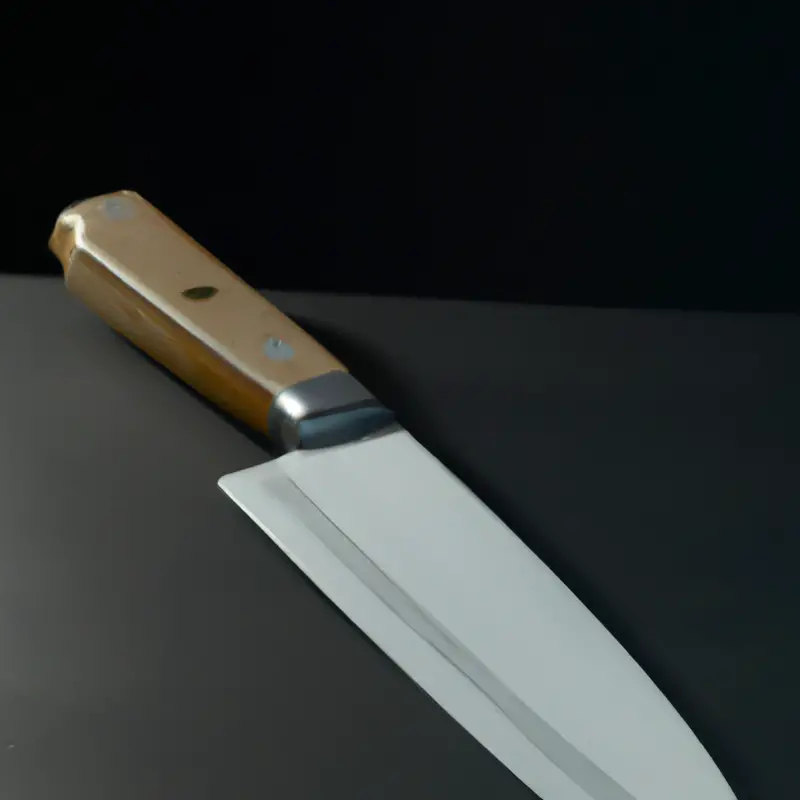
Nakiri Knives: A Japanese-Style Knife for Precise Vegetable Cutting
The Nakiri knife is a Japanese-style knife that specializes in precise vegetable cutting. Its flat, rectangular blade helps make clean, straight cuts through fruits and vegetables.
Unlike other knives, the Nakiri is not meant for chopping bones or hard produce, making it a more versatile option for home cooks who mainly cut fruits and vegetables.
Its lightweight design also makes it easy to handle. The Nakiri knife is a great addition to any kitchen for those looking to elevate their vegetable cutting skills.
Fillet Knives: A Must-Have for Fish Lovers
Fillet knives are specially designed for filleting and deboning fish. With their long, thin, and flexible blades, they can easily cut through the flesh and bones of fish, allowing for efficient and precise cuts.
For fish lovers, a fillet knife is a must-have kitchen tool.
Not only does it make the preparation process a breeze, but it also ensures that the flesh is separated from the bones without wasting any meat. When choosing a fillet knife, consider the length of the blade.
Longer blades are ideal for larger fish, while shorter blades are better for small or delicate fish.
Additionally, it’s important to choose a fillet knife with a flexible blade as it can easily follow the contours of a fish’s body to make precise cuts. Investing in a high-quality fillet knife is essential for any fish lover as it ensures efficient and precise filleting, making meal preparation a lot more enjoyable.
The Chopper: An Effective Knife for Chopping Vegetables and Herbs
The chopper is an essential chef knife for chopping vegetables and herbs. It has a broad and heavy blade that allows for easy and precise cutting through vegetables and herbs.
The weight and width of the blade ensure that the knife can handle tough and large vegetables like squash, pumpkin, and sweet potatoes with minimal effort.
Additionally, the chopper’s curved blade allows for a rocking motion that further reduces the effort required to chop vegetables and herbs. For optimal results, it is recommended to use a chopper with a sharp blade to prevent the vegetables and herbs from getting crushed and losing their texture and flavor.
Overall, if you enjoy cooking with vegetables and herbs, adding a chopper to your knife collection is highly recommended.
The Tomato Knife: A Specialized Knife for Slicing Tomatoes Perfectly
The tomato knife is a specialized kitchen tool designed to perfectly slice tomatoes. It has a serrated edge, which allows it to cut through the delicate tomato skin without crushing or damaging the juicy flesh.
Its long, slender shape and sharp blade enable precise, clean cuts, making it an essential tool for any aspiring chef or home cook who frequently prepares fresh tomatoes.
Though it has a specific purpose, it can also be used for other small, delicate tasks such as slicing lemons or strawberries.
Steak Knives: Enjoy Your Steaks with Ease and Precision
Steak knives are a must-have for any steak lover. These knives are designed with a serrated edge, allowing for precise cutting through steaks without tearing or shredding the meat.
The blades are typically shorter than other chef knives, making them easier to control and more efficient for cutting through thick meats.
Look for steak knives with high-carbon stainless steel blades for durability and easy maintenance. Handles can range from classic wood to modern synthetic materials, depending on your preference.
Invest in a quality set of steak knives to elevate your steak dining experience with ease and precision.
The Cheese Knife: The Right Tool for Every Cheese Type
When it comes to cheese, having the right tool for the job can make all the difference in the taste and presentation of your cheese platter. Enter the cheese knife, a specialized tool designed to handle the unique textures and densities of different cheese varieties.
Here are a few types of cheese knives and their purposes:
- Soft Cheese Knife: has holes in the blade to prevent soft cheese from sticking.
- Hard Cheese Knife: features a shaper tip for cutting dense, firm cheeses like cheddar and parmesan.
- Cheese Plane: produces paper-thin slices of cheese, perfect for layering or snacking.
- Fork-Tipped Knife: used for serving crumbly or soft cheeses without distorting their shape.
- Cheese Spreader: designed for spreading soft cheese, pâtés, and dips.
Remember, cheese knives are not one-size-fits-all. Consider investing in a few different types to elevate your cheese game and impress your guests.
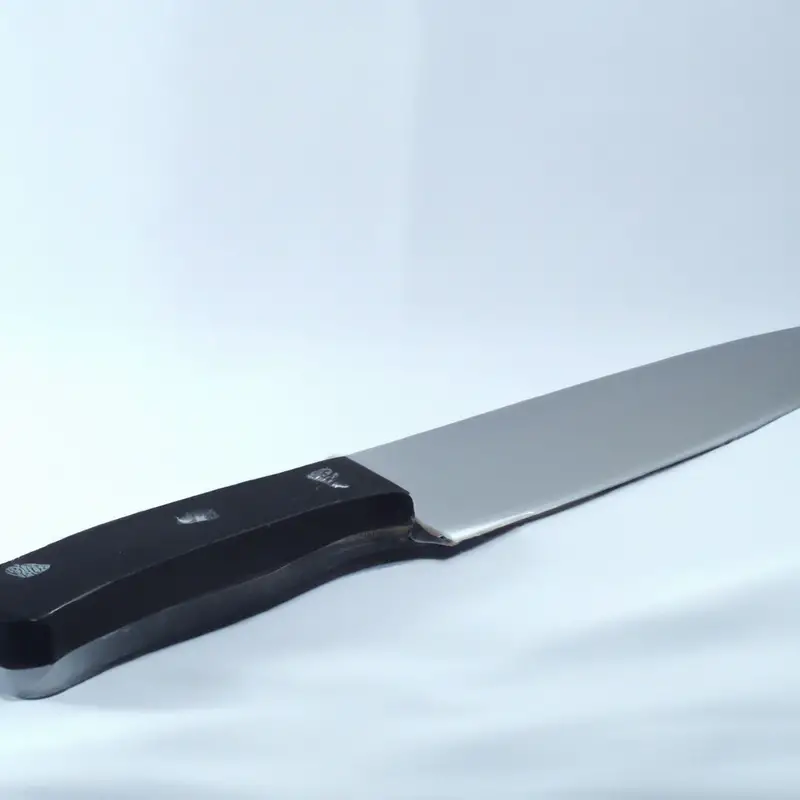
The Mezzaluna: A Traditional Italian Knife for Herbs and Vegetables
The Mezzaluna is a traditional Italian knife that is specifically designed for the preparation of herbs and vegetables. Its name translates to “half-moon” because of its curved blade shape, which resembles a half moon.
The Mezzaluna has a single handle attached to one or two blades with a curved cutting edge.
This knife’s rocking motion makes it especially useful for finely chopping herbs and vegetables. It is typically used by placing it on the herbs or vegetables and rocking it back and forth, using the blade’s curvature to cut through the food.
Some variations feature a double blade, which makes it easier to cut through larger vegetables.
The Mezzaluna is a must-have for any cook who regularly works with fresh herbs and vegetables.
The Chinese Chef Knife: A Knife like No Other
The Chinese chef knife is a unique knife that stands out from the rest of the Chef knives. Also known as the Chinese cleaver, it is a versatile and multipurpose knife that can be used for a wide range of tasks.
It is designed with a rectangular shape, which gives it a larger surface area that can be used to scoop chopped ingredients or can be used as a makeshift spatula.
The Chinese chef knife is commonly used in Asian cuisine, especially in China, where it is the primary kitchen tool. Its unique design makes it perfect for chopping vegetables, slicing meat, crushing garlic and ginger, and even for bone cutting.
It is also ideal for making thin uniform cuts and cutting through poultry or thick pieces of meat due to its sheer weight and size.
Although it is often referred to as a cleaver, it is not limited to cutting meat only, its sharp edge and thin blade can also cut delicate ingredients like herbs and greens with ease. It is perfect for both home cooks and professional chefs and is an essential piece in any kitchen.
Overall, the Chinese chef knife may seem intimidating to some due to its size and shape, but once mastered, it offers a unique culinary experience unparalleled to any other knife.
Its reliable and versatile design is perfect for anyone who enjoys cooking or working in the kitchen.
Essential Knife Accessories: Sharpeners, Honers & Knife Blocks
Essential Knife Accessories: Sharpeners, Honers & Knife Blocks Investing in a good quality chef knife is essential for every home cook and professional chef. However, to ensure that your knives are always in top condition and perform at their best, you need to have the right accessories.
The essential knife accessories that every chef should have in their kitchen includes sharpeners, honers, and knife blocks.
Sharpeners – A blunt knife is not only frustrating but also dangerous. Therefore, investing in a good knife sharpener is vital.
It will save you time and money in the long run, and you won’t have to replace your knives as often.
There are three types of sharpeners; manual, electric, and whetstones. Honers – Honing is an essential process that is often overlooked.
Honing a knife helps to realign the blade’s edge, keeping it sharp for longer periods.
A honing rod is a common honing accessory that every chef should have in their kitchen. Knife Blocks – A knife block is an essential accessory to have in any kitchen.
It keeps your knives organized, easily accessible, and ensures that they’re safe and secure.
There are several types of knife blocks, including magnetic knife blocks, traditional knife blocks, and drawer knife blocks. Investing in the right knife sharpeners, honers, and knife blocks will help keep your knives in good condition and perform at their best.
It will ensure that you can handle any task effortlessly and with precision.
How to Choose the Perfect Chef Knife for You: A Practical Guide
When it comes to choosing the perfect chef knife for you, it’s important to consider a few key factors.
- Size: Consider the size of the knife based on the type of food you’ll be mostly working with, as well as the size of your hand.
- Material: Look for high-quality materials such as carbon or stainless steel, which will provide durability and longevity.
- Handle: Make sure the handle is comfortable and provides a good grip. Handles can be made from various materials such as wood, plastic, or metal.
- Purpose: Different knives have different purposes, so consider what tasks you will be using the knife for. For example, a serrated knife is great for cutting through tough foods like crusty bread, while a boning knife is perfect for trimming meat.
- Budget: High-quality chef knives can be quite expensive, so consider your budget when choosing the perfect knife for you.
Ultimately, the perfect chef knife for you will depend on your personal preferences and needs. Try out a few different knives before making a decision, and invest in a high-quality knife that will last you a long time with proper care.
Final Verdict
Understanding the different types of chef knives is essential for every cook to elevate their culinary skills. From classic chef knives to specialized blades like nakiri and mezzaluna, each knife serves a distinct purpose in the kitchen.
By investing in high-quality knives and learning proper techniques for each one, you can improve your efficiency and precision in the kitchen.
Remember, choosing the right knife can make all the difference in your cooking experience, so take the time to find the perfect fit for you. With the knowledge and insights gained from this guide, you can confidently navigate the world of chef knives and achieve exceptional results in all your culinary endeavors.

